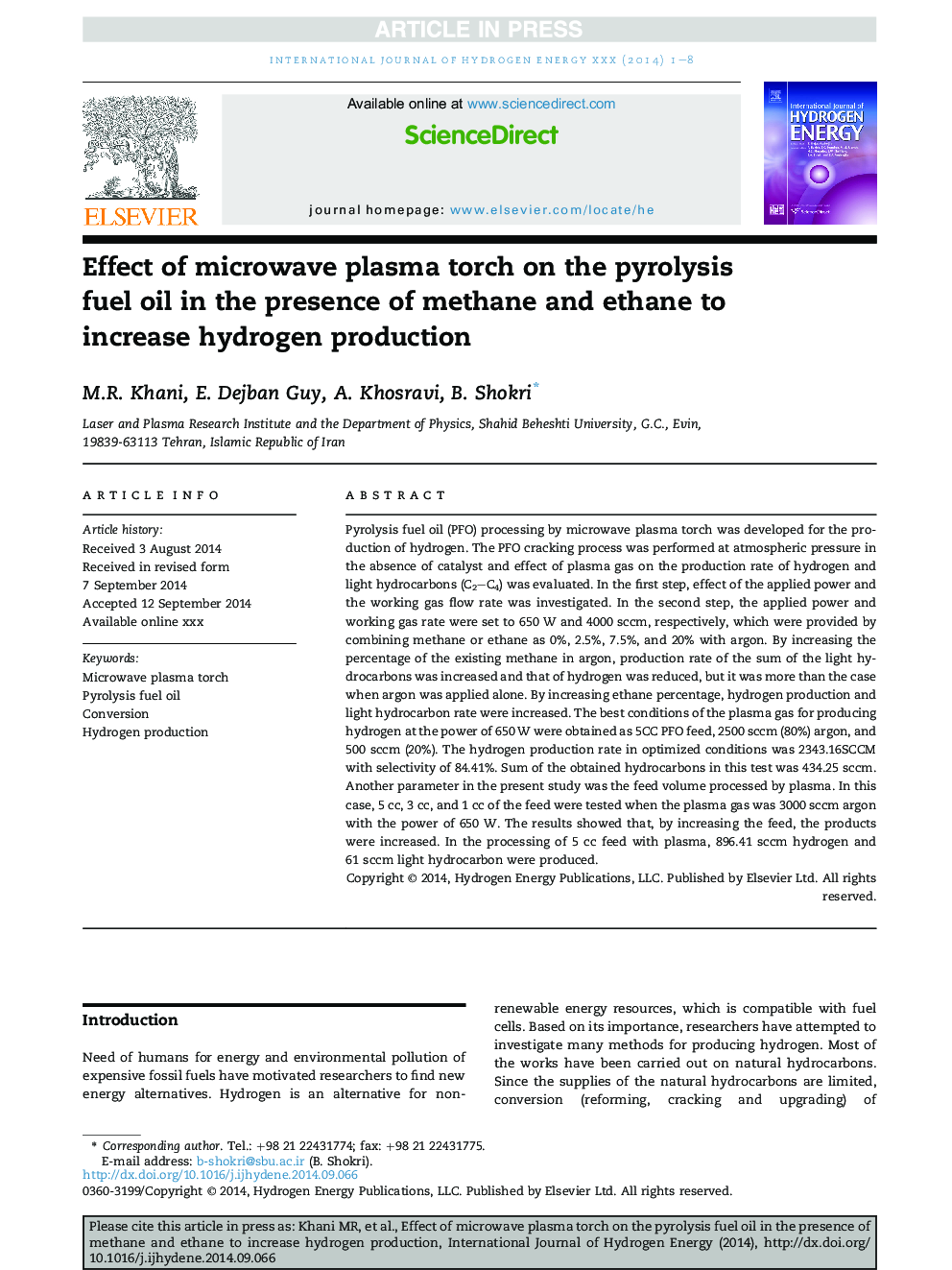| Article ID | Journal | Published Year | Pages | File Type |
|---|---|---|---|---|
| 7717487 | International Journal of Hydrogen Energy | 2014 | 8 Pages |
Abstract
Pyrolysis fuel oil (PFO) processing by microwave plasma torch was developed for the production of hydrogen. The PFO cracking process was performed at atmospheric pressure in the absence of catalyst and effect of plasma gas on the production rate of hydrogen and light hydrocarbons (C2-C4) was evaluated. In the first step, effect of the applied power and the working gas flow rate was investigated. In the second step, the applied power and working gas rate were set to 650Â W and 4000Â sccm, respectively, which were provided by combining methane or ethane as 0%, 2.5%, 7.5%, and 20% with argon. By increasing the percentage of the existing methane in argon, production rate of the sum of the light hydrocarbons was increased and that of hydrogen was reduced, but it was more than the case when argon was applied alone. By increasing ethane percentage, hydrogen production and light hydrocarbon rate were increased. The best conditions of the plasma gas for producing hydrogen at the power of 650Â W were obtained as 5CC PFO feed, 2500Â sccm (80%) argon, and 500Â sccm (20%). The hydrogen production rate in optimized conditions was 2343.16SCCM with selectivity of 84.41%. Sum of the obtained hydrocarbons in this test was 434.25Â sccm. Another parameter in the present study was the feed volume processed by plasma. In this case, 5Â cc, 3Â cc, and 1Â cc of the feed were tested when the plasma gas was 3000Â sccm argon with the power of 650Â W. The results showed that, by increasing the feed, the products were increased. In the processing of 5Â cc feed with plasma, 896.41Â sccm hydrogen and 61Â sccm light hydrocarbon were produced.
Related Topics
Physical Sciences and Engineering
Chemistry
Electrochemistry
Authors
M.R. Khani, E. Dejban Guy, A. Khosravi, B. Shokri,
